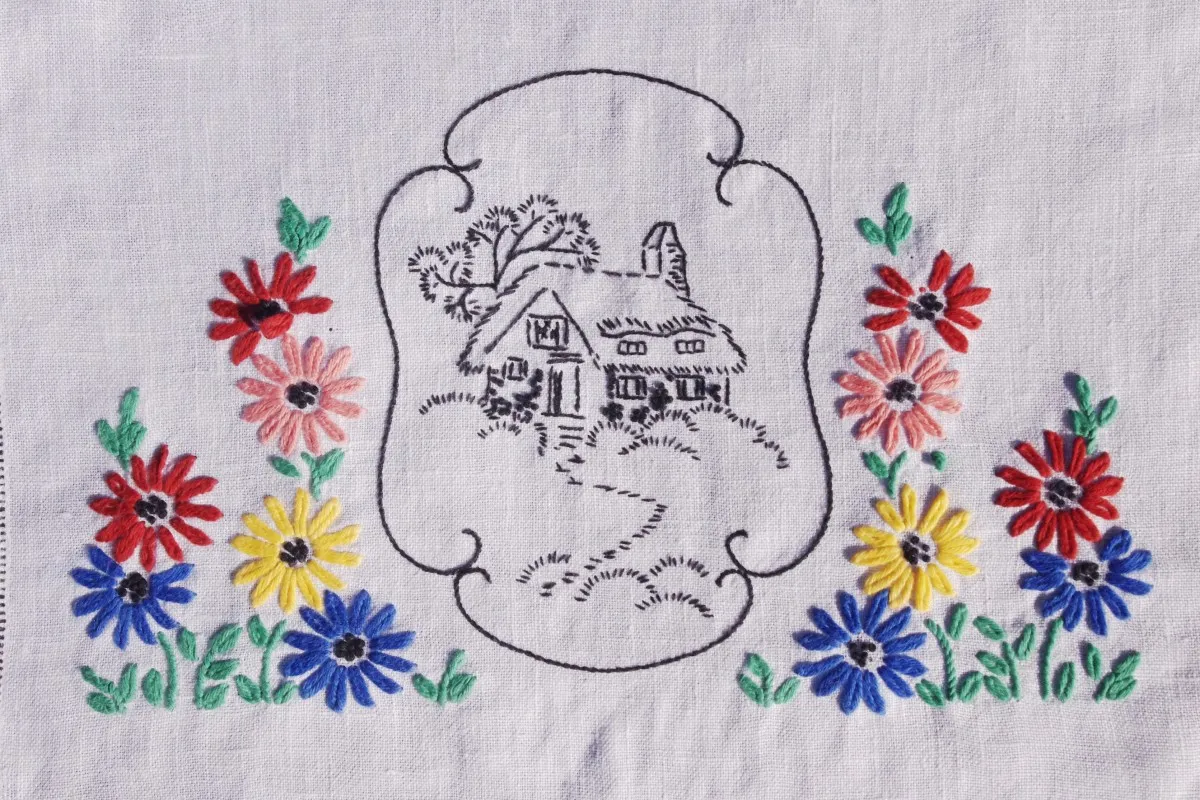H&A blogger Sarah-Jane Hosegood runs the weekly Twitter vintage networking event #vintagefindhour. In her blog for H&A she writes about her most recent finds and fair experiences. This month, the height of spring has her reaching for her collection of vintage table linens...
There was a time when the tablecloth was a daily essential. My late grandmother wouldn't have dreamt of having a bare dining table. The tablecloth was an everyday practicality, protecting the table surface from scratches and spills ensuring the tabletop rarely saw the light of day. Special occasions meanwhile prompted the digging out of prized, more expensive lace or damask table linens.
This square, rectangular or circular piece of fabric has been around for centuries - the earliest mention of one appears in 103 AD. In Europe, a white tablecloth was the standard covering for the dinner table and in the late medieval period, the whiter your tablecloth, the wealthier you were perceived to be. It showed that you had several servants to keep your household linens clean. Pale colours ruled until the Victorian era when rich colours and fringing became fashionable, and lavish dinnerware sets in similar deep colours were bought to match.
My favourite tablecloths are the popular designs of the early 20th century. These inexpensive yet decorative cotton linens were adorned with colourful embroidery mainly at the corners, edges, and centre. They instantly cheer up table settings from the traditional to the more modern. The art deco period saw more geometric patterns come to the fore in order to match the bold and striking dinnerware of the era.
For the women of yesteryear, embroidering linens such as these was a habitual practice. On my travels at fairs and online I've come across vintage tablecloth home embroidery kits by Anchor, complete with little ‘how-to’ booklets of various stitch types. In the 1950s, when most households were without a television, my mother-in-law fondly recalls how stitching tablecloths was a favourite way to fill her childhood evenings. I recently sold one of these kits for £15.

Florals remained popular, becoming bolder and more vibrant towards the 1950s and 1960s. Some were fun and rather kitsch such as riviera sketches with palm trees, fruit and cafe society scenes, while many of the prints mirrored the bright, modern dinnerware designs of the time made by Alfred Meakin and Midwinter ceramics.
Souvenir and royal commemorative prints were also popular. Royal linens are topical at the moment too thanks to the Queen’s 90th birthday. I predict tablecloths commemorating her coronation may well go up in price.
Fine damask examples were mainly produced in Ireland with the main manufacturer, Thomas Ferguson & Co still in existence today. Damask linens are woven in a particular way from pure flax yarns so that subtle patterns are visible even in an all-white cloth. Often you will find these damasks in vintage gift boxes, usually containing a tablecloth with four matching napkins. Some of these sets include hand-painted linens and unopened box sets can be snapped up from £15, a steal considering the high quality of these crisp linens.
Values do vary largely depending on age, design, quality and condition. Bargains from as little as £1 are to be had at car boot sales, charity shops and online auction sites if you're a keen hunter. Recently I spotted a pale blue damask 1953 coronation tablecloth for £7, and some small lace tablecloths for £5 each.
If you're browsing treasures, at the other end of the spectrum, an exquisitely detailed fine lace Italian tablecloth with 12 napkins could easily be priced over £300. For examples with highly detailed embroidery, you could be looking at just over £100.
Condition is key for collectors, so when you are in the market for a vintage tablecloth, look out for the quality of the fabric, embroidery or lace intricacy as well as the print subject. Be sure to check for holes, burns and stains before you part with your cash. That said, if you do find a damaged one, there are other creative alternative uses. Clever artisans have been preserving the embroidered patterns by sewing them onto cushion covers, bags, quilts and even framing them to make lovely gifts.
As a starting point, try having a look at the fabrics collected by some dealers who you can track down on Twitter: @vintagecotton, @vintagebazaar1, @liz_van_Hasselt, @SueMeager and @Quilterdown.
If you feel spoilt for choice, attractive floral and check prints never seem to go out of fashion – the huge success of Cath Kidston is proof of this. But with that in mind, you can’t beat the real thing, so I for one will be holding on tightly to my vintage linen collection.
Tweet Sarah-Jane at @vintagehomeshop or join in the #vintagefindhour live chat on Wednesdays at 8pm.